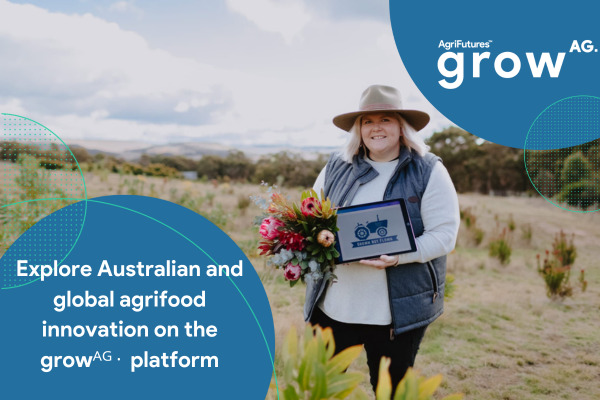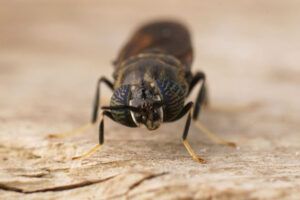For the third episode of our new What The Fork? Digitalks by AgFunder series, AgFunder was joined by S2G Ventures, the world’s most active foodtech and agtech venture capital investor, to exclusively discuss new research conducted by the firm.
S2G recently published a report looking at how the Covid-19 pandemic is impacting the global food supply chain, and the role that technology can play in creating a more resilient agrifood ecosystem.
The S2G team left no stone unturned, looking through the history of past pandemics – even as far back as the Plague of Justinian, which ravaged the Byzantine Empire in the sixth century AD – to understand how economies were affected by outbreaks, and how they recovered in their aftermath.
AgFunder believes it’s time to invest in a more resilient food system. Find out more here.
In this episode of What The Fork?, investment experts from both firms discussed the report’s findings, highlighting which areas of tech innovation will prove critical to building a healthier, more sustainable, and more secure food system in the post-Covid world.
Joining AgFunder’s head of media and research Louisa Burwood-Taylor for this third digitalk were:
- Sanjeev Krishnan, chief investment officer and managing director, S2G Ventures
- Rob Leclerc, founding partner, AgFunder
- Dan Ripma, senior associate, S2G Ventures
You can watch a video recording of the webinar by scrolling down to the bottom of this page. We’ll also be posting an audio-only recording of the session via our Future Food podcast at a later date.
Before you dive into the full version, here are a few of the key takeaways from the webinar:
The day-to-day of agri-foodtech invesing is changing
- Until a few months ago, many VCs would’ve told you that they’d never make an investment decision without having face-to-face meetings. But Covid-19 is changing that.
- “I think there’s a new normal,” said Krishnan, listing the changes in workplace practices brought on by the pandemic. “Guest policy, who comes to visit us [at the office], how we do due diligence, who flies, board meetings – there is going to be a whole reset and I don’t know if it goes back to normal as we knew it.”
- For AgFunder, which was originally envisioned as an ‘online VC firm,’ some of this is par for the course. “We’re pretty digitally native – maybe 20% of our investments we’ve already done over Zoom calls,” said Leclerc. Even so, some investing activities that would previously have necessitated a physical presence are having to move online. “We livestreamed a diligence call with a robotics startup in Florida, [and we were] looking at all the parts of the robot over the call. It was very surreal,” he said.
Pandemics as innovation catalysts
- S2G decided to conduct its research to understand the “mental model” of how the pandemic pans out in economic terms, said Krishnan. “People were talking about ’08-’09, 9/11, World War II – but none of those really fit in our view. So we tried to look at the economic history of pandemics: what were the changes in markets, governance, consumer behavior, and so on.”
- The S2G team found that there were differences with each pandemic episode in terms of time to recovery and economic costs. But there were some common themes: “Unemployment, market behavior, but also how innovation took hold – almost all of these [pandemics] had an innovation cycle that followed […] and generally, consumer preferences [tended] to change,” Krishnan said. “Food and ag is recession-proof and, I think, pandemic proof.”
- “When we looked at innovation cycles associated with pandemics, we saw it all the way back in 1918 [the Spanish Flu pandemic] was a catalyst for adoption of modern medicine, the telephone,” Ripma said. “And SARS in 2003 is credited as a catalyst for Alibaba to become a real player in shifting consumer behavior from purchasing in-store to shopping online.”
- Prior to the current pandemic – which is suspected of having its origin in the food supply chain – tech has had “difficulty in moving from the purely digital world of bits to the analog world,” said Leclerc. “But I think we’re going to get a lot of peace dividends from this because tech really does need to interface with the analog world. I think biotech will be a big beneficiary as another example.”
Where to innovate
- Indoor agriculture can bring stability to the supply chain through decentralized production, automation, and integration of systems. It also enables year-round availability of certain crops and less dependence on imports for food and fertilizer. A “contactless” food chain is made possible through the use of automation, from planting to harvesting to packaging.
- Alternative protein innovation could get a boost from the pandemic. “There’s an asymmetrical relationship between just-in-time inventory that groceries rely on” as well as the “long-cycle production for animal meat, where it takes months and years to produce,” Ripma said. Centralized meat processing also presents pathogen risks, further indicating that the Covid-19 crisis is a potential catalyst for innovation in cellular protein, plant-based protein, algae, fungus, and other biomass concepts.
- The labor shortages that have ensued as a result of lockdown measures present an innovation opportunity in areas such as robotics, drones, and sensor technology.
- In terms of the post-Covid supply chain, expect food distribution to become more agile, traceable, and personalized. Areas such as grocery delivery, food waste reduction, shelf life extension, traceability and transparency, and micro-fulfillment are ripe for further disruption.
- ‘Food as medicine’ will be a key theme going forward. Several of the most at-risk populations for Covid-19 have nutrition-related medical conditions such diabetes, obesity, or cardiovascular disease. Microbiome, personalized medicine, and functional ingredients are prime areas for tech innovation here.
Download S2G’s full report here.
What do you think? Watch the video below and let us know what you think! Email [email protected]













Sponsored
Sponsored post: The innovator’s dilemma: why agbioscience innovation must focus on the farmer first